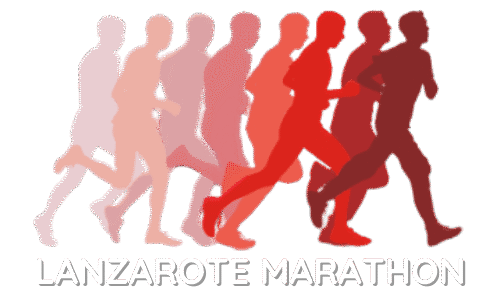
How to Carb Load Safely Before Race Day
Race day is crucial for any athlete, and the right nutrition can make all the difference. Properly carb-loading allows runners to maximise their glycogen stores, providing the energy needed for optimal performance. Understanding the best practices for carbohydrate intake can ensure a successful lead-up to the race without unwanted gastrointestinal issues.
Athletes often grapple with how much and what types of carbs to consume. The key is to focus on easily digestible carbohydrates in the days leading up to the event. This can include foods such as pasta, rice, and bread, which help to efficiently replenish energy stores.
Timing is just as significant as the quantity of carbohydrates. Ideally, an athlete should begin increasing their carb intake two to three days before the race. This strategy not only fuels the body but also enhances endurance, allowing for a smoother race experience.
Understanding Carb Loading and Its Role in Performance
Carb loading is a strategy used to maximise glycogen stores prior to endurance events. This section outlines the science behind carb loading, why athletes adopt this practice, and how carbohydrate metabolism influences performance.
The Science Behind Carb Loading
Carb loading involves increasing carbohydrate intake to enhance glycogen stores in muscles and the liver before a race. This process leverages the body’s ability to store carbohydrates as glycogen, an essential fuel for endurance activities.
Athletes typically start this cycle about three to four days before the event. During this time, they consume a higher percentage of carbohydrates—up to 70-80% of their daily calories. This technique aims to reach a state known as supercompensation, where glycogen levels are elevated beyond normal capacity.
By following this strategy, athletes ensure that their muscles have ample glycogen stores ready for race day, which can significantly enhance endurance and performance.
Why Athletes Carb Load Before Race Day
Athletes carb-load primarily to improve endurance and delay fatigue during prolonged exercise. Glycogen is stored in muscles and is the preferred energy source during intense physical activity.
For endurance runners and cyclists, having optimal muscle glycogen levels can be the difference between completing a race successfully and hitting the proverbial wall. This phenomenon occurs when glycogen stores are depleted, leading to a severe decline in performance.
Carb loading not only boosts glycogen reserves but also aids in hydration. Carbohydrates attract water into the muscles, which can improve performance and reduce the risk of dehydration on race day.
Carbohydrate Metabolism and Glycogen Storage
Carbohydrate metabolism involves the conversion of dietary carbohydrates into glucose, which is utilised for energy. Glycogen storage occurs predominantly in skeletal muscles and the liver. When athletes consume carbohydrates, the body converts them into glucose.
Excess glucose is then stored as glycogen. During exercise, especially intense or prolonged efforts, the body draws on these glycogen stores for energy. Endurance athletes depend heavily on muscle glycogen because it provides a quick energy source.
When glycogen stores are sufficient, athletes can maintain a higher level of performance for a longer duration. Monitoring carbohydrate intake and timing is essential to optimise these stores, ultimately leading to better race day outcomes.
How to Safely Implement Carb Loading
Carb loading can significantly enhance performance when done correctly. The timing, quantity, and type of carbohydrates consumed are crucial in this process.
When and How Much to Increase Carbohydrate Intake
Carbohydrate intake should increase in the days leading up to a race. During the three days before the event, aiming for approximately 8-12 grams of carbohydrates per kilogram of body weight is typical.
For instance, a 70 kg runner may need between 560 and 840 grams of carbohydrates daily. Start increasing carbohydrate intake while tapering exercise to allow the body to store glycogen more effectively. Monitor blood glucose levels to ensure an optimal balance that avoids sudden spikes or drops.
Recommended Foods and Meal Planning
It is vital to choose the right food sources during carb loading. Focus on complex carbohydrates such as:
- Pasta
- Brown rice
- Quinoa
- Whole grains
Incorporate starchy vegetables like sweet potatoes and healthy fruits such as bananas for additional nutrients. Planning meals that include these foods will enhance carbohydrate ingestion while providing essential vitamins and minerals.
Include snacks like nuts and seeds to maintain energy levels. Using supplements like maltodextrin can also aid in meeting carbohydrate goals, especially for those with higher energy demands.
Avoiding Common Pitfalls and GI Issues
Many athletes face gastrointestinal (GI) issues during carb loading. It’s important to introduce foods gradually to avoid distress. Choose whole foods over processed options to promote better digestion.
Drinking sufficient fluids alongside increased carbohydrate intake helps maintain hydration and supports digestion. Avoid high-fibre foods immediately before the race, as they can cause stomach discomfort.
Monitor tolerance to different carbohydrate sources to help minimise GI problems. Keeping a food diary can assist in identifying any adverse reactions and adjusting the diet accordingly, ensuring the athlete feels energised and ready on race day.
Optimising Your Carb Loading Strategy for Race Day
Effective carb loading plays a critical role in maximising glycogen stores, minimising fatigue, and enhancing endurance performance. A well-timed and balanced approach can significantly impact race day results.
Timing Your Carb Loading Phase
The carb-loading phase typically begins three to four days before the race. During this period, athletes should gradually increase carbohydrate intake while tapering exercise intensity. This approach helps to deplete existing glycogen, allowing the body to store more.
Suggested Timeline:
- Day 1: Maintain normal training; consume 5-7 g/kg of carbohydrates.
- Day 2: Focus on tapering exercise; increase carbohydrate intake to 7-10 g/kg.
- Day 3: Rest or light activities; consume high-carb meals, prioritising complex carbs like pasta and rice.
- Day 4 (Race Day): Include easily digestible carbs such as sugar water or gels for energy before the start.
Balancing Macronutrients for Peak Performance
While carbohydrates are the priority, balancing macronutrients proves beneficial for endurance and recovery. Protein should be included, but in lesser amounts, around 1-1.5 g of protein per kg of body weight, aiding in muscle preservation.
Include healthy fats in moderation, focusing on sources like avocados and nuts.
Example Macronutrient Breakdown:
- Carbohydrates: 70-80%
- Protein: 10-15%
- Fat: 10-15%
Monitoring blood glucose levels during both training and carb loading can assist in adjusting dietary sources effectively. Avoid excessive simple sugars which may lead to hypoglycaemia, causing fatigue before the race.
Monitoring and Adjusting for Individual Needs
Each athlete responds differently to carb loading. Monitoring factors such as quality of sleep, mood, and energy levels can provide insights for adjustments.
Personalised Considerations:
- Glycogen Levels: Measuring through performance tests can indicate if glycogen stores are optimal.
- Hydration Status: Ensure adequate fluid intake along with carbohydrates to enhance glycogen content in muscles.
Using a protein shake post-exercise may aid recovery and support glycogen resynthesis. Ultimately, experimenting with different high-carb foods during training can help identify the best personal strategies, ensuring readiness to face the wall during events like the London Marathon.
